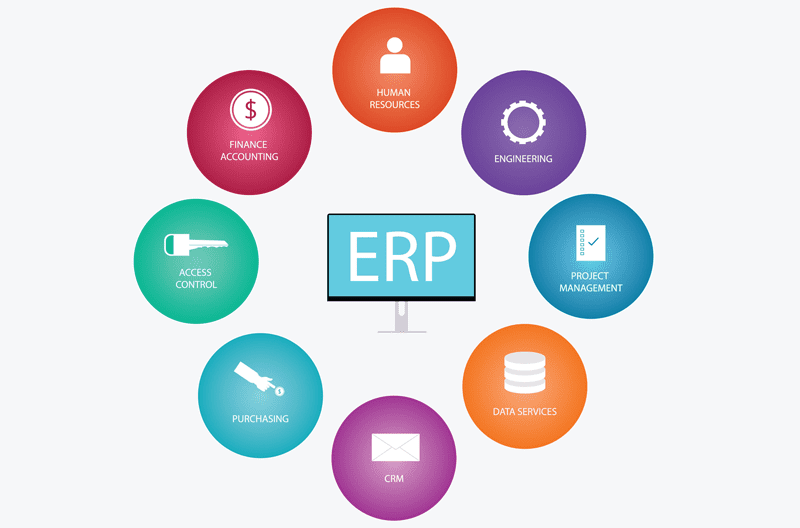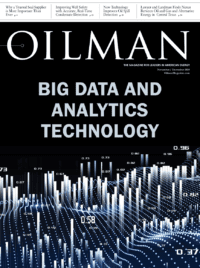While it may be counterintuitive to make sweeping changes to enterprise software strategies amid a pandemic, reduced budgets and headcounts, the payoff could be substantial in the long run.
Working remotely has drastically shifted work processes across every industry; however, the effects on the energy industry specifically seem to be more entrenched. In many cases, companies have been forced into a digital transformation for which they were not ready.
Before the COVID-19 pandemic and the massive drop in crude oil prices and demand, most companies that hadn’t already started their digital transformation efforts at least had those projects on their books for 2020. Many responded to the economic hardship by slashing capital budgets and moving such projects into the “discretionary” column. Now, forced to look at how they do business, how more people than ever work outside an office building, and how their enterprise software reacts to these massive process changes, many companies are now taking a long hard look at the software they use to run their business.
We’re not just talking about Excel (although that favorite tool of choice is getting a workout during the pandemic). Many companies are expecting some of the processes and work-from-home (WFH) policies to become permanent or nearly so. Despite the downturn, many are looking at wholesale changes in their enterprise software and global processes to aid in their digital revolution. For some, this includes rethinking big investments in enterprise resource planning (ERP) software, commodity trading and risk management systems, and how they run and support those systems.
Digital Transformation – YOU ARE HERE
The response to process and software changes depends on where you, your department and the entire company are in your digital transformation journey. For early adopters who bit the bullet, you could be hailed as a genius in hindsight. Those still on their journey are often speeding up to make that last push to completion in case another round of pandemic, locusts or other plagues circles the globe. For those followers and laggards who treated digital transformation as if it were a fad that would just “disappear like MySpace,” you may find yourself the proverbial coyote riding your “Acme Digital Transformation rocket” off the COVID cliff. But, thanks to technology (not from Acme), there is hope.
As organizations, including major software vendors, moved to Agile frameworks to deliver software and implementations more quickly, a convergence of technologies and services fell into place. Sure, cloud services have been around quite a while, but the incredible push to move infrastructure to cloud platforms and software as a service (SaaS) has been nothing short of amazing. With the latest release of rapid deployment low-code/no-code tools from Salesforce, Microsoft, Amazon and Google/Alphabet, the toolsets are now designed for two speeds: fast and faster.
Faster Than the Bits Can Travel?
Changing the software and changing the processes are related, but two different paths. Given the recent process changes thrust upon them are fresh in the minds of managers and corporate executives, many are looking to lock in, codify and automate the best of those changes, and find a way to fix the others. During that time, those same stakeholders began to see the cracks in their enterprise software, especially the ERP systems they use to manage so many functions across the organization.
In recent conversations with managers in the energy and chemical industries, I’ve heard some common themes:
- “Our people could make changes manually, but the software would not support the changes fast enough.”
- “The software had unexpected limitations based on assumptions made for all industries, but not specific to oil and gas.”
- “We’ve started looking for software that can change as fast as we do/need to and automate repetitive tasks.”
While it may be counterintuitive to make sweeping process and software changes in response to the COVID-19 crisis while costs are being slashed, many executives have found that making the change can reduce their budget footprint. With the traditional ERP implementation lifecycle typically ranging from six months to two years, how can the change be justified?
By merging cloud technologies, process changes that have already occurred and new software supporting rapid implementation cycles (and Agile continuous releases), a new ERP or other key software can be rolled out in under six months. That includes big players like SAP (though continuous releases are harder there). For instance, Microsoft’s Dynamics platforms and Oracle’s Netsuite, both as SaaS offerings, can be installed in days and rolled out in a few weeks, depending on data requirements.
Simplifying and Streamlining with Less IT Help
Similarly, moving other applications to the cloud and simplifying the users’ virtual desktops into workflow-driven processes drive both cost savings and quick process changes. Whether you’re moving a trading system or an asset maintenance system, today’s cloud platforms often make migrations easier, although the biggest benefits are seen when migrating to cloud-first solutions (those designed to take full advantage of cloud components.)
As more software opts for a look that incorporates a known click-and-feel (making everything look like Outlook and Excel), users can tolerate – and generate – change more quickly. With open application programming interfaces (APIs) making it easy to use drag-and-drop, using low-code/no-code platforms like Salesforce Lightning, Microsoft’s PowerPlatform and Amazon’s Honeycode to drive automation, the new business users can drive innovation from their own desktop (from the office or their kitchen). These collaborative workflows – along with insightful self-service analytics using PowerBI and Tableau – save on development and support costs while cloud migration can push non-tech companies out of the server business.
If you think it’s time to take a closer look at your software and your processes to accelerate your digital transformation initiatives, or you think it’s high time to look at moving apps to the cloud, Opportune can help you define a strategy for automation and operating with less.
Rob Robertsis a Director in Opportune LLP’sProcess & Technology practice. Rob has over 20 years of experience in the energy industry (upstream, downstream, oilfield services) focused on the delivery of mid-to-large-scale ERP implementations involving process optimization, system integration and application automation. His focus has been on the architecture, design and implementation of cross-functional solutions, including process integration, mobility and business analytics. He has been involved in multiple full life cycle system implementations from pre-sales and system planning to implementation and support. Prior to joining Opportune, Rob was responsible for ERP and technology services for multiple private consulting firms.





